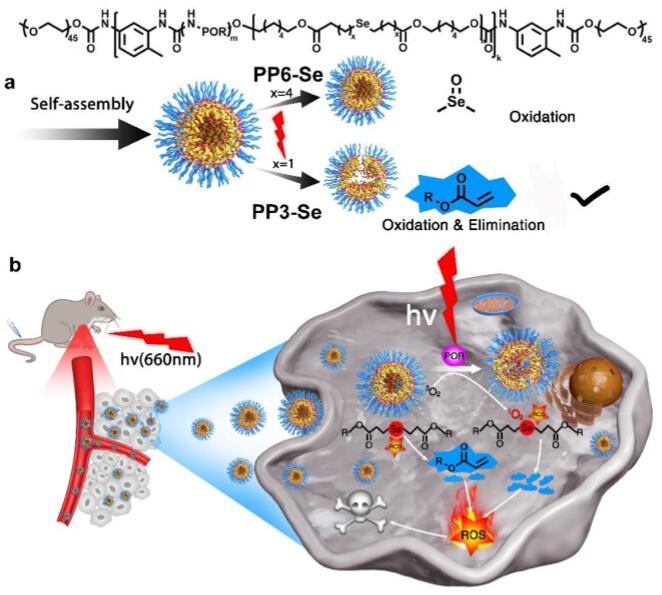Chenxing Sun, Lu Wang, Banruo Xianyu, Tianyu Li, Shiqian Gao, Huaping Xu
Biomaterials, 2019, 225, 119514.
Selenoxide elimination reaction has been widely used in the field of organic synthesis. However, few studies have been conducted to apply this reaction in biodegradable nanomedicine. In this work, the selenoxide elimination reaction was used for cancer treatment via producing excess cellular reactive oxygen species (ROS) for the first time. The β-seleno diesters and porphyrin derivates containing nanoparticle could be responsive to the intracellular ROS and produce acrylates through the elimination reaction. The acrylates would further deplete intracellular GSH in tumor cells and finally improved the anticancer activity in the mice tumor model. Different from traditional ROS-responsive nanomedicine, the elimination product of this reaction could regenerate cytotoxic ROS and specifically disturb the redox balance of tumor cells. This work would provide attractive avenues for the development of therapeutic strategies against cancer via synthesis of well-designed biodegradable polymers.

